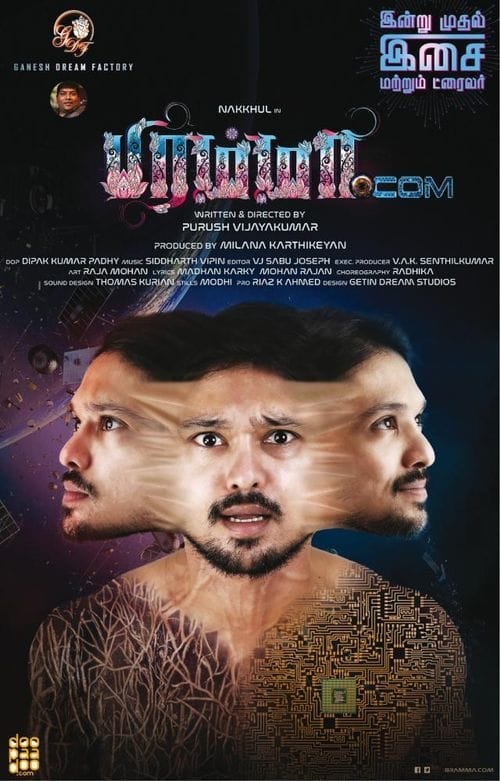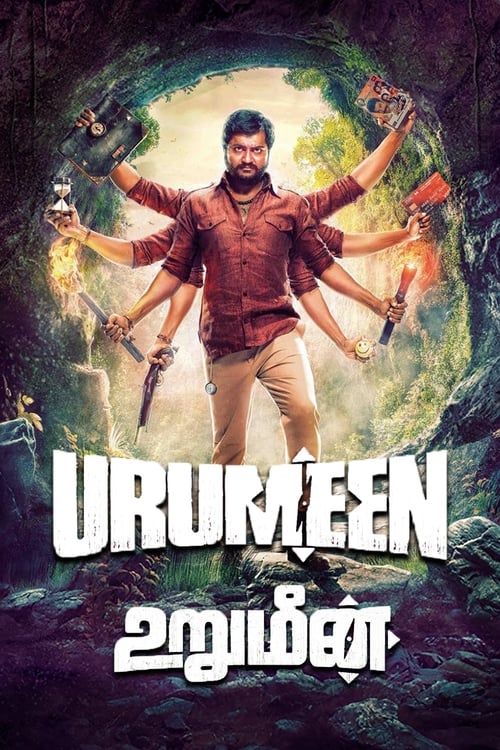
Ask Your Own Question
What is the plot?
The Complete Story of Simba (2019): A Stoner's Journey to Connection
The film opens on an ordinary Sunday morning in an unnamed Indian city, where we meet Mahesh, a man trapped in the suffocating grip of his own loneliness. His apartment is a reflection of his inner state--cluttered, dimly lit, and filled with the haze of cannabis smoke. Mahesh sits alone, taking a hit from his joint, seeking that fleeting dopamine rush that temporarily fills the void in his chest. This has become his ritual, his escape, his only reliable source of pleasure in a life that feels increasingly hollow and disconnected from the world around him. He is a stoner not by choice but by necessity, using marijuana as a pharmaceutical solution to emotional pain that runs deeper than any drug can truly address.
On this particular Sunday, as Mahesh is lost in his altered state of consciousness, there is a knock at his door. His neighbor, Madhu, stands outside with an urgent request. Madhu is a journalist--a woman with purpose, direction, and a life that moves forward with intention. She is professional, composed, and clearly someone who has her act together. She holds the leash of a massive Great Dane, a beautiful and imposing dog named Simba. Madhu explains that she has an unexpected work assignment that will take her away from home, and she desperately needs someone to look after Simba while she is gone. She asks Mahesh if he can watch the dog for her, emphasizing that Simba is her best friend, her companion, her emotional anchor. Mahesh, still under the influence, agrees almost reflexively. He is not thinking clearly, not considering the responsibility he is taking on, simply nodding along as Madhu leaves Simba in his care and departs.
What happens next is the central mystery and magic of the film: as Mahesh's cannabis-induced haze deepens, his perception of reality begins to shift. The Great Dane, Simba, transforms in his mind. Through the lens of his altered consciousness, Simba is no longer simply a dog. Simba becomes a person--a talking, thinking, fully sentient human being who can communicate with Mahesh on a profound level. This is not presented as a supernatural event or a magical occurrence. Rather, it is the manifestation of Mahesh's desperate need for connection, his loneliness so acute that his mind creates a companion who can understand him, speak to him, and engage with him as an equal.
In this hallucinatory state, Mahesh and Simba begin to bond in ways that feel deeply real to Mahesh. They have conversations that range from the mundane to the philosophical. Simba becomes a confidant, a friend, someone who listens without judgment as Mahesh pours out his feelings of isolation and despair. Mahesh finds himself opening up to this dog-turned-human in ways he has never opened up to anyone else. The conversations are both comedic and touching, revealing the depths of Mahesh's emotional struggle and his desperate hunger for genuine human connection.
As the days pass, Mahesh and Simba venture out into the city together. They walk through parks, navigate busy streets, and encounter various people and situations. To Mahesh, these are grand adventures with his newfound best friend. To everyone else around them, they see a stoner walking his dog, sometimes talking to himself, sometimes appearing to have full conversations with the animal. The comedy of the film emerges from this disconnect between Mahesh's internal reality and the external world's perception of him. People stare, some laugh, some express concern or disdain for this clearly troubled man and his dog.
During these outings, Mahesh experiences moments of genuine joy and connection through his hallucinations. Simba challenges him, questions him, and forces him to confront uncomfortable truths about himself. In one sense, Simba becomes Mahesh's therapist, his mirror, the external voice of his own conscience and wisdom. Through Simba, Mahesh begins to understand that his loneliness is not something that happened to him--it is something he has created and maintained through his choices, his isolation, and his reliance on drugs to numb the pain rather than address it.
The film reveals through flashbacks and conversations that Mahesh has not always been this way. There are hints of a past where he had relationships, connections, and a sense of purpose. But somewhere along the way, he withdrew. He isolated himself. He chose the temporary comfort of cannabis over the difficult work of building and maintaining genuine human relationships. His loneliness became a self-fulfilling prophecy, a cycle that deepened with each passing day.
Meanwhile, Madhu continues her work as a journalist, unaware of the profound transformation happening in her apartment and in the mind of the man she left her beloved dog with. She trusts Mahesh to care for Simba, and in a way, he does--he feeds the dog, he walks the dog, he ensures the dog's physical needs are met. But more importantly, through his hallucinations, Mahesh is learning to care for himself through his relationship with Simba.
The turning point comes gradually. Through his interactions with Simba, Mahesh begins to recognize the pattern of his own behavior. He sees how his drug use is not a solution but a symptom, not a cure but a deepening of the disease. Simba, in his hallucinated form, becomes increasingly direct with Mahesh, challenging him to confront the reality of his situation. The conversations become less about escapism and more about accountability. Simba asks Mahesh difficult questions: Why are you really alone? What are you afraid of? What would happen if you stopped running?
As the film progresses, Mahesh makes a crucial decision. He decides to stop using cannabis. This is not presented as an easy choice or a sudden epiphany. Rather, it is a gradual recognition that the drug is not helping him--it is hurting him, trapping him, keeping him locked in a cycle of loneliness and despair. He begins to reduce his usage, to spend more time in a clear-headed state, to experience reality without the buffer of altered consciousness.
And as Mahesh's mind clears, something remarkable happens: Simba transforms back. The hallucination fades. The dog is once again simply a dog--a loyal, loving Great Dane, but no longer a talking human companion. This moment is both heartbreaking and liberating. Mahesh loses his imaginary friend, but in doing so, he gains something more valuable: clarity, self-awareness, and the recognition that he must build real connections with real people if he is to overcome his loneliness.
When Madhu returns to collect Simba, she notices a change in Mahesh. He is clearer, more present, more engaged with the world. There is a moment of connection between them--not romantic necessarily, but genuine human connection. Madhu sees that Mahesh has taken care of Simba, but more than that, she senses that something has shifted within him. She recognizes that her dog, in some mysterious way, has helped this lonely man begin to heal.
The film concludes with Mahesh walking through a park with Simba--the real dog, not the hallucination. He is smiling, genuinely smiling, not the forced smile of someone seeking an escape but the authentic smile of someone who has found a reason to engage with life. He is no longer dependent on cannabis to feel alive. He has discovered that connection, even with a dog, even with the memory of a hallucinated friend, is more powerful than any drug. He has learned that loneliness is not a permanent condition but a choice, and that he has the power to choose differently.
The final scenes show Mahesh beginning to rebuild his life. He is more social, more open, more willing to engage with the world around him. He has not solved all his problems--personal growth is not a destination but a journey--but he has taken the first crucial steps toward healing. The film ends with the suggestion that Mahesh will continue to grow, to connect, to live a life that is no longer defined by the search for instant dopamine hits but by the slower, deeper satisfaction of genuine human connection and self-respect.
Throughout the entire narrative, no character dies. There are no dramatic deaths, no murders, no tragic losses of life. Instead, the film is about a different kind of death and resurrection--the death of Mahesh's old self, his old patterns, his old ways of coping, and the resurrection of his capacity for connection, growth, and authentic living. The Great Dane named Simba, whether real or hallucinated, becomes the catalyst for this transformation, proving that sometimes the most profound changes in our lives come not from dramatic external events but from the quiet, persistent presence of companionship and the willingness to confront our own truths.
What is the ending?
In the movie "Simba" produced in 2019, the ending sees Simba confronting the antagonist, a powerful figure who has caused chaos in his life and the lives of those he loves. After a fierce battle, Simba emerges victorious, reclaiming his rightful place as a leader. The film concludes with Simba uniting his community and looking forward to a hopeful future.
As the climax of "Simba" unfolds, the tension reaches its peak. The scene opens with a darkened landscape, the air thick with anticipation. Simba, having gathered his courage and allies, stands at the edge of a cliff overlooking the valley where the final confrontation will take place. His heart pounds in his chest, a mix of fear and determination coursing through him. He knows that this battle is not just for his own freedom but for the future of his people.
The camera shifts to the antagonist, a menacing figure cloaked in shadows, who stands defiantly at the center of the valley. The antagonist's eyes glint with malice, and a sinister smile plays on their lips as they await Simba's approach. The atmosphere is charged with tension, and the stakes could not be higher.
As Simba descends into the valley, he is met by his loyal friends and allies, who stand by his side, ready to fight. Each character's face reflects a mix of fear and resolve, showcasing their unwavering support for Simba. The scene is filled with the sounds of nature, but they are overshadowed by the impending clash.
The battle erupts with a flurry of movement. Simba charges forward, his muscles taut with effort, as he engages in a fierce struggle with the antagonist. The choreography of the fight is intense, with each blow exchanged highlighting Simba's growth and determination. He recalls the lessons learned from his past, drawing strength from the memories of his family and friends.
As the fight progresses, Simba's internal struggle becomes evident. He grapples with the weight of his responsibilities and the fear of failure. However, with each strike, he channels his emotions into a powerful resolve. The camera captures close-ups of his face, revealing the determination etched in his features.
In a pivotal moment, Simba finds himself on the brink of defeat, pinned down by the antagonist. Just as despair threatens to overwhelm him, he hears the voices of his loved ones echoing in his mind, urging him to rise. With a surge of strength, he breaks free, launching a final, decisive attack that sends the antagonist sprawling.
The antagonist, realizing their defeat, attempts to flee but is ultimately cornered. Simba stands tall, breathing heavily, his eyes filled with a mix of triumph and sorrow. He confronts the antagonist, reminding them of the pain they have caused and the lives they have destroyed. In a moment of clarity, Simba chooses not to take vengeance but instead offers a chance for redemption, showcasing his growth as a leader.
The antagonist, faced with the consequences of their actions, is left to reflect on their choices. The scene shifts to Simba's allies, who cheer and rally around him, celebrating their victory. The atmosphere transforms from one of tension to one of hope and unity.
As the film draws to a close, Simba stands before his community, now united and stronger than ever. He addresses them with heartfelt words, expressing his commitment to lead with compassion and wisdom. The camera pans out, capturing the vibrant landscape of their home, symbolizing a new beginning.
In the final moments, Simba gazes into the horizon, a sense of peace washing over him. He has reclaimed his place not just as a leader but as a symbol of hope for his people. The screen fades to black, leaving the audience with a sense of closure and the promise of a brighter future for Simba and his community.
Is there a post-credit scene?
In the movie "Simba" produced in 2019, there is no post-credit scene. The film concludes its narrative without any additional scenes or content after the credits roll. The story wraps up with the main characters' arcs resolved, leaving the audience with a sense of closure regarding the events that transpired throughout the film. The absence of a post-credit scene allows viewers to reflect on the journey of the characters and the themes explored in the movie without any further distractions.
What motivates Simba to return to his homeland after years of exile?
Simba's motivation to return to his homeland stems from a deep sense of responsibility and guilt. After the death of his father, Mufasa, Simba is haunted by his past and the belief that he caused his father's demise. However, when he encounters Nala, who reveals the dire state of the Pride Lands under Scar's rule, Simba feels a growing sense of duty to reclaim his rightful place as king and restore peace to his home.
How does Scar manipulate Simba throughout the story?
Scar manipulates Simba by preying on his insecurities and fears. He convinces Simba that he is responsible for Mufasa's death, leading Simba to flee the Pride Lands. Scar further exploits Simba's absence by taking over the throne and creating a desolate environment, all while maintaining a facade of care for Simba's well-being. Scar's cunning nature is evident as he uses psychological tactics to keep Simba away from his true identity and responsibilities.
What role do Timon and Pumbaa play in Simba's life during his exile?
Timon and Pumbaa play a crucial role in Simba's life during his exile by providing him with companionship and a carefree lifestyle. They introduce him to the 'Hakuna Matata' philosophy, which encourages him to forget his past troubles and live in the moment. This friendship helps Simba cope with his guilt and pain, but it also leads to a sense of avoidance regarding his responsibilities as the rightful king.
How does Nala's character influence Simba's journey?
Nala's character significantly influences Simba's journey by challenging him to confront his past and embrace his identity. When she finds Simba in the jungle, she represents a connection to his former life and the urgency of the situation back home. Nala's strength and determination inspire Simba to reconsider his choices, ultimately pushing him to return to the Pride Lands and face Scar, thus igniting his transformation from a reluctant prince to a courageous leader.
What is the significance of the Circle of Life in Simba's story?
The Circle of Life is a central theme in Simba's story, symbolizing the interconnectedness of all living beings and the natural order of the animal kingdom. It serves as a reminder of the responsibilities that come with leadership and the importance of honoring one's heritage. Throughout the film, Simba learns that he must accept his place in this cycle, which ultimately leads him to embrace his role as king and restore balance to the Pride Lands.
Is this family friendly?
The movie "Simba," produced in 2019, is generally considered family-friendly, but it does contain some scenes that may be potentially objectionable or upsetting for children or sensitive viewers. Here are a few aspects to be aware of:
-
Violence and Conflict: There are scenes depicting fights and confrontations that may be intense for younger viewers. The portrayal of rivalries and struggles for power can be emotionally charged.
-
Death and Loss: The film addresses themes of loss and grief, which may be difficult for children to process. Characters experience significant emotional turmoil due to the loss of loved ones.
-
Emotional Struggles: Characters face internal conflicts and moments of despair, which may evoke strong emotions. The depiction of fear, betrayal, and loneliness could be unsettling for some.
-
Mature Themes: The narrative explores themes of responsibility, identity, and the consequences of one's actions, which may be complex for younger audiences to fully grasp.
-
Intense Emotional Moments: There are scenes that evoke sadness or distress, particularly during pivotal character developments and turning points in the story.
While the film is designed to be accessible to a family audience, these elements may require parental guidance for younger viewers or those who are particularly sensitive to such themes.




























